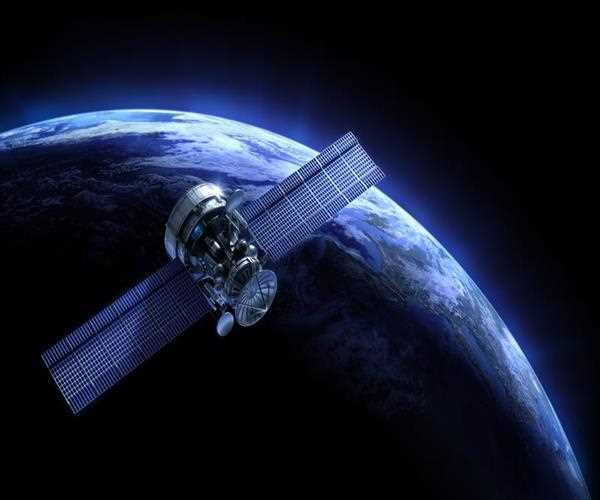Search here

30-Jan-2023
ISRO's Upcoming Space Missions 2023
India’s space organization, ISRO (Indian Space Research Organization) is rapidly making a mark in the world of space exploration. Its recent missions to Mars and the Moon have been met with great success and admiration. Looking ahead to 2023, ISRO has some ambitious plans for future space missions. It aims to continue its exploration of the outer reaches of our solar system, as well as land a rover on the Moon and send a mission to Venus
So if you are interested in learning more about what lies ahead for ISRO and space exploration, then read on!
ISRO's Chandrayaan-3 Mission
The Indian Space Research Organisation (ISRO) is gearing up for its next mission, Chandrayaan-3. This mission will be similar to the first two Chandrayaan missions, with the objective of studying the moon's surface and composition.
Chandrayaan-3 will be launched on a GSLV Mk III rocket, and will consist of an orbiter, lander, and rover. The orbiter and lander will be similar to those used in the previous missions, but the rover will be new. The rover will be equipped with scientific instruments to study the moon's surface and composition.
The mission is currently scheduled for launch and ISRO is hopeful that it will be successful.
The Gaganyaan Mission
The Gaganyaan mission is ISRO's upcoming human spaceflight mission which is scheduled to launch in February 2023. The mission will send three Indian astronauts to space for a period of seven days, and will be the first time that India has sent humans to space. The astronauts will undergo training in Russia for a period of 11 months prior to the launch.
The Gaganyaan mission is an ambitious undertaking by ISRO, and its success will be a major milestone for India's space program. The mission has been designed to showcase India's capability to develop and operate complex human spaceflight missions, and will pave the way for more ambitious future missions.
Juice Mission
The Jupiter Icy Moons Explorer mission is scheduled to launch in April 2023 by the European Space Agency (ESA). The Juice mission will complete 35 flybys of Jupiter near its three large ocean-bearing moons, Europa, Ganymede, and Callisto, in order to collect in-depth data on the gas giant. The mission will not only use the ten sensors on board to explore Jupiter's environment in depth, but it will also describe Jupiter's moons as planetary objects and potential habitats.
The complex environment of Jupiter, including its magnetism, radiation, and plasma, will be closely observed by the Juice spacecraft. By moving into Ganymede's orbit after its 35 flybys of Jupiter and its moons, it will also become the first spacecraft to shift its own orbit around another planet.
OSIRIS-REx mission
In September of 2016, the OSIRIS-REx mission was launched. It launched in 2021 from the asteroid Bennu. The asteroid samples that the spacecraft is carrying are scheduled to be returned to Earth in September 2023. A sample capsule that will precisely land at the Utah Test and Training range of the United States Air Force will be released once the spacecraft reaches a height of approximately 250 kilometers above the surface of our planet.
NASA says that asteroids like Bennu could be time capsules for our solar system's early history. They may even contain samples of the ancient building blocks of life and preserve chemical signatures from when the universe was younger.
Psyche Mission
NASA intends to launch the Psyche mission to investigate the metallic asteroid 16 Psyche following OSIRIS-REx's return. Unique in that it appears to be the exposed nickel-iron core of an early planet, one of the building blocks of the solar system, the asteroid orbits the Sun between Mars and Jupiter.
The majority of rocky terrestrial planets, including Earth, have metallic cores deep within them. However, due to their remote location deep in the planet, these cores are difficult to access.
Shukrayaan-1 Mission
The Shukrayaan-1 mission is ISRO's first interplanetary mission to study the planet Venus. The orbiter will be injected into an elliptical orbit around Venus, with a periapsis (closest approach) of 450 km and an apoapsis (farthest approach) of 80,000 km. The orbiter will carry eight scientific payloads to study the surface and atmosphere of Venus.
The Shukrayaan-1 mission is slated for launch in 2023 on ISRO's GSLV Mk III rocket. The mission will have a nominal lifetime of two years, but could potentially be extended to four years if all goes well.
Final words
With India's emergence as a global leader in the space sector, ISRO's upcoming missions in 2023 will take the country to greater heights. These incredible feats of engineering and scientific advancement have already started paving the way for India into an age of technological exploration and progress. With these upcoming launches, ISRO is sure to make history not just here on Earth but also beyond it!

SEO and Content Writer
I am Drishan vig. I used to write blogs, articles, and stories in a way that entices the audience. I assure you that consistency, style, and tone must be met while writing the content. Working with the clients like bfc, varthana, ITC hotels, indusind, mumpa, mollydolly etc. has made me realized that writing content is not enough but doing seo is the first thing for it.
Join Our Newsletter
Subscribe to our newsletter to receive emails about new views posts, releases and updates.
Copyright 2010 - 2025 MindStick Software Pvt. Ltd. All Rights Reserved Privacy Policy | Terms & Conditions | Cookie Policy